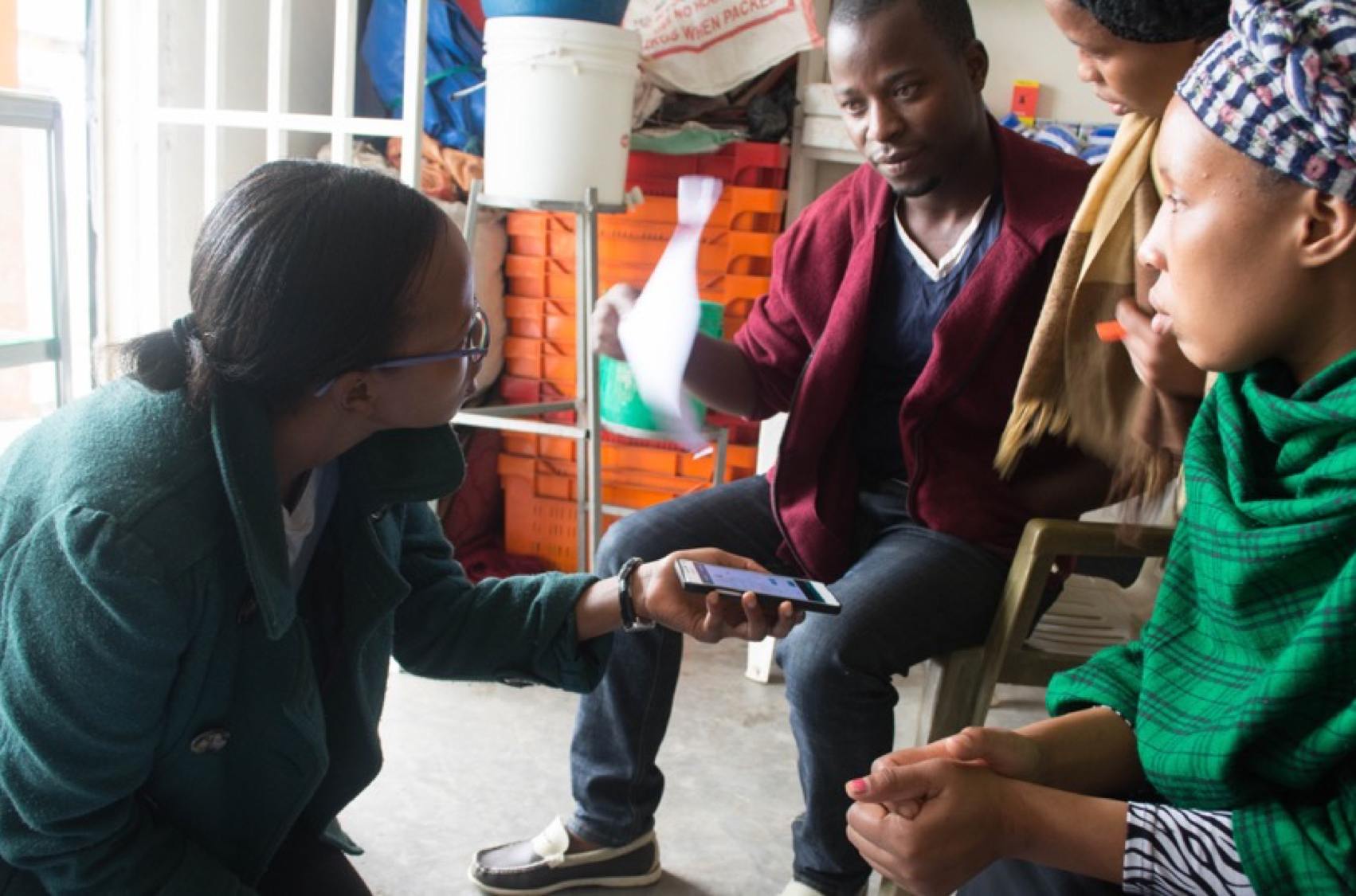Client: CGAP Consultative Group to Assist the Poor, World Bank
Industry: Agricultural Finance
Location: Arusha, Tanzania
Date/Duration: March-June 2017
Role: Project Manager and Creative Lead at Dalberg Design
Project Status: Pilot in process in 3 regions with different crops and planting seasons
Problem
Distribution for agricultural supplies to the rural poor farmers, who make up 80% of the population, is expensive and unreliable. In rural Tanzania and across Africa, there are small shops called “agro-dealers” that sell small packages of agricultural inputs to small holder farmers (< 2 acres of land) which includes seeds, fertilizer, insecticides and tools. Demand forecasting for large major distributors to service these small agro-dealer shops can be a costly and risky business. Often, the cost of that long supply chain is passed down to the smallholder farmer, who is already financially insecure with their entire livelihood dependent on the success of the crops.
Solution
A digitally enabled layaway pre-payment program for packages of agricultural supplies that are delivered on-time throughout a farmer's specific season. This program guarantees there will be no stock-outs of products and a lower price on critical inputs. It also gives distributors certainty around demand of products, giving more flexibility to negotiate with manufacturers and streamline logistics.
Service blueprint
This service blueprint details out the customer journey as the anchor timeline across the top, defining the type of user touchpoint (digital, retail, customer service, SMS). The following rows capture the operational actions for three roles for employees in the agricultural input provider organization, who will be implementing the digital layaway service for selected products. The last row explains the chance of customer drop-out from the program.
FeatureS
Farmer SMS Info
SMS was a backbone communication with customers, providing purchase confirmations, education on product use and application. In addition, these SMS provided individualized reminders for payment schedules and recommendations.
Purchase Order App
This smart phone management tool provided sign-up, tracking, stocking and order fulfillment capabilities to agro-dealers. Every small agro-dealer can increase customer base by sign-up farmers for a layaway packages in the most rural areas. Offline forms are saved until network coverage.
Retail Branding Kits
Every agro-dealer gets a packet of materials to promote the layaway program and differentiate themselves from other stores in the market. This brand also indicated a more equipped and educated agro-dealer increasing status and trust in the villages.
Reflections // Learnings
Don't force informal systems to streamline and structure. As designers, we often see the need to order and clean up systems, but these communities have constructed systems that work for them. Often to “formalize” it doesn't recognize the range of needs, and our interventions often mess it all up.
Accelerate technology adoption by enabling rural farmer to become entrepreuenurs, adding their own services to local needs. Providing financing programs for dual-sim card phones allow and even encourages agents to have their own side-businesses. Provide mobile phone credit for employee incentives.
Could rural agriculture help us create more agile, simple enterprise management software? I've never know anyone who liked setting up SAP. It was always a necessary painful process. Could we leap frog simple, mobile phone based systems for developed markets from this enterprise software?







